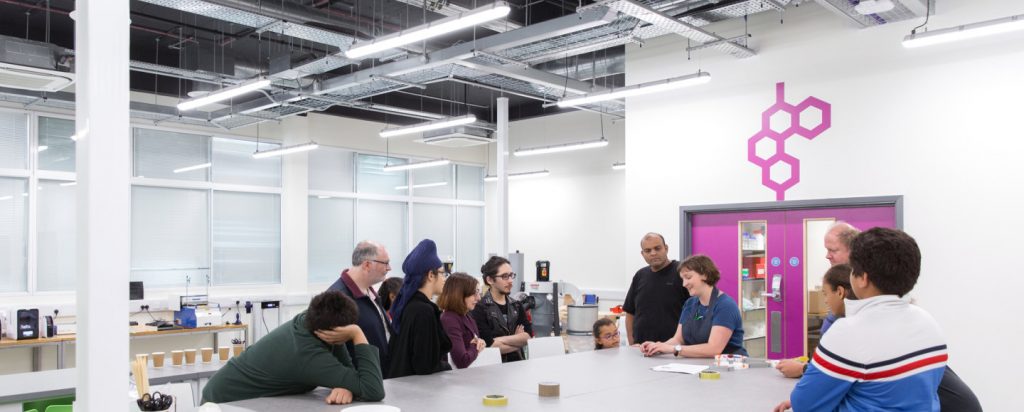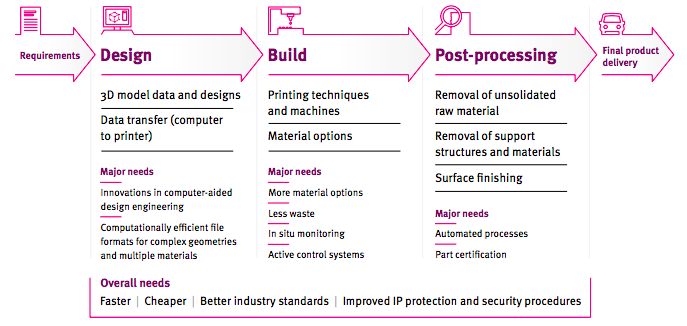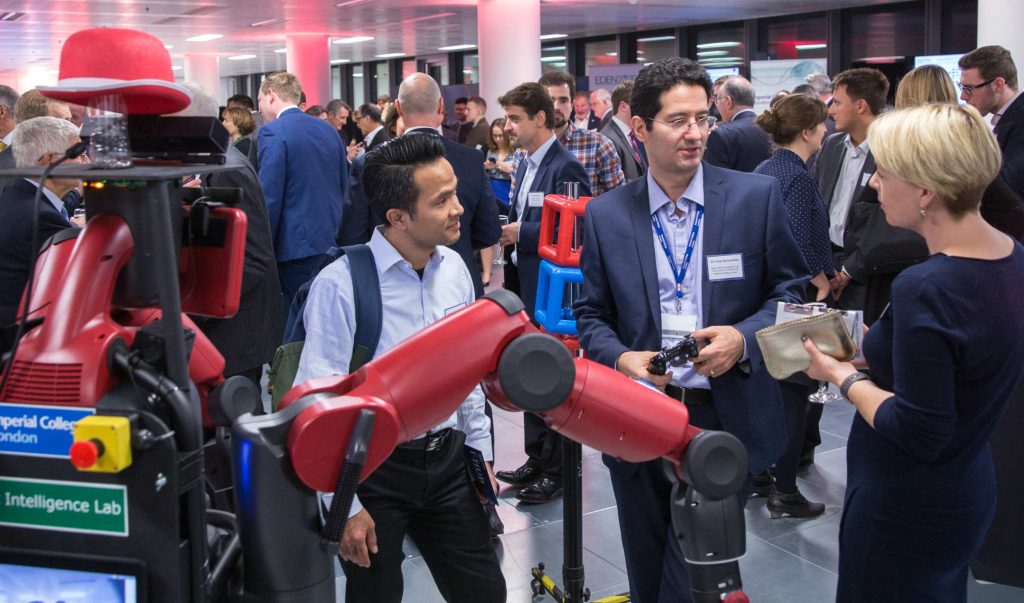A report from the Institute for Molecular Science and Engineering (IMSE) at Imperial College London details a vision for the future of additive manufacturing.
The briefing, launched at Imperial’s new White City campus, notes that 3D printing requires advances in software, machines, automation and standards for wider adoption. A key driver of these innovations, as suggested by Imperial, may be through greater collaboration between molecular scientists and engineers.
Paper launch at the White City campus
The paper’s launch site, Imperial’s White City campus, is set to become an important new centre for 3D printing research and outreach.
White City’s Invention Rooms are home to the Reach Out Makerspace and Imperial College Advanced Hackspace where local people and entrepreneurs can create using 3D printers and other tools.
Also located at the White City campus is the Translation & Innovation Hub (I-HUB). This is an incubator where companies work alongside researchers to develop concepts into final products, often 3D printing prototypes.
Significant materials testing will take place at the Department of Chemistry’s Molecular Sciences Research Hub (MSRH) when it opens at White City in 2018.

UK additive manufacturing is promising but faces challenges
According to the report, additive manufacturing has the potential to offer “many economic, technical and environmental advantages” compared to traditional manufacturing approaches such as machining. This includes reduced production costs and times; the ability to create optimized objects; the option to use graded materials; flexible production; diminished waste;and readiness for “the digital revolution” and industry 4.0.
However, the report warns that there are number of major challenges to address before additive manufacturing progresses beyond high-value applications. This includes better industry standards, a faster route to end-products, improved IP and security measures, and more suitably trained personnel.

Addressing these challenges at Imperial
The report claims that solutions to these needs may be found in the joint field of molecular science and engineering. In this case, research scientists may hope to tune the structure of materials on an atomic scale to make them more dynamic and multifunctional. This may include the study of metamaterials with engineered behaviours outside of their natural limits.
As an example the report cites a connection between the microstructure and the mechanical response of end-use objects. A particular Imperial study into 3D printed AISI 316L steel revealed the reason behind the material’s good ductility.
Finding a faster route to end use products
Bringing together chemical research scientists with engineers who work on end-use products may make the route from concept to industrial application faster and more cost-efficient.
Large-scale Electrochemical Additive Manufacturing (ECAM) experiments at Imperial have revealed a faster and more efficient method of 3D printing metal. This another example of how the university hopes to impact the future of metal 3D printing for the desktop.
To further clarify areas of potential development, report co-author Dr. Connor Myant explains, “Imperial’s research spans various applications in fields such as medicine, biology, chemistry, robotics, materials and design, which allows us to be at the forefront of this burgeoning industry.”
The key is in cross “pollination”
To create closer ties between academia and industry, the report notes that Imperial’s existing Institute for Molecular Science and Engineering (IMSE) and Additive Manufacturing Network (AMN) have specifically been set up to “facilitate trans-disciplinary research.”
The two institutes joined forces in May 2017 for an internal workshop entitled “The Future of Additive Manufacturing” which featured guests from industry.
Future 3D printing research will take place at two new facilities, the MSRH in White City and the Dyson School of Design Engineering in South Kensington.
Imperial’s Dr. Shoshana Weider said that “by bringing researchers, from a host of disciplines, together with other stakeholders, we aim to provide fertile ground for stimulating innovation.”

From academia to industry
In addition to improving additive manufacturing in industry, the report concludes that advances in research may also yield improvements in “quantum technology and photonics,” and tackling “societal challenges.”
Extensive investigation into 3D printing and its adoption by wider industry is also happening at the National Physical Laboratory in London, which is partnered with the University of Strathclyde in Glasgow, Scotland. Its particular focus is on quality control and destructive testing.
The IMSE report, entitled The value of additive manufacturing, future opportunities by Dr. Billy Wu, Dr. Connor Myant and Dr. Shoshana Z. Weider, is available to read online here.
For more information on 3D printing research, subscribe to our free 3D Printing Industry newsletter, follow us on Twitter, and like us on Facebook.
Featured image shows a render of the completed Imperial White City campus. Image via Imperial College London.


